Apple MacBook (2015) vs Microsoft Surface Pro 3
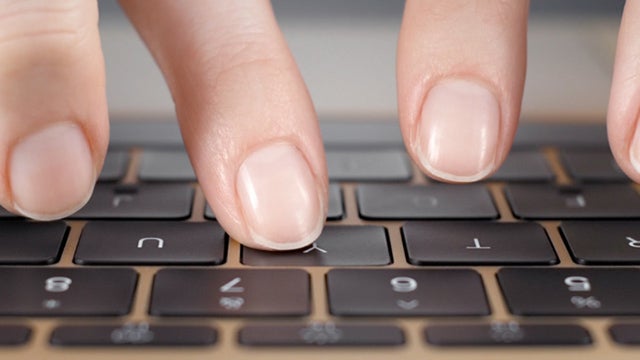
Is the new MacBook a better option than the Surface Pro 3? We compare the two.
If you’re looking for a laptop that can go anywhere with you, two of the best options right now are Apple’s brand-new 12-inch MacBook and Microsoft’s hybrid Surface Pro 3.
Both are slim, light, pack gorgeous displays, some interesting hardware additions and enough power to do the majority of tasks you’ll need them to do.
While the MacBook is a laptop in the traditional sense, the Surface Pro 3 is a kickstand-toting tablet that you pair with a keyboard. Some might say it’s the best of both worlds, others might say it masters neither.
Let’s take a deeper look and see which one is worth spending your money on.
SEE ALSO: Best Laptops, Ultrabooks and Hybrids
When were the latest versions announced?
Buying a pricey piece of tech months after launch always leads to the inevitable thought, ‘when’s the next one going to come out? The Microsoft Surface Pro 3 is already well into its lifecycle, so those questions are definitely worth considering if you’re looking to pick up the tablet/laptop hybrid.
Before the Surface Pro 3, the Pro 2 was released in October 2013 and the original device was available to buy in February 2013. That’s three devices in little over two years. We wouldn’t be surprised if Microsoft stuck to a summer release this year and used the Surface Pro 4, if one is in fact coming, to launch the new Windows 10 update in July.
The MacBook on the other hand is brand-new, so new it’s still quite hard to get hold of. We wouldn’t bet on an updated model seeing the light of day until a similar time next year, though there could always be a slight processor bump later on in 2015.
SEE ALSO: MacBook (2015) vs MacBook Air
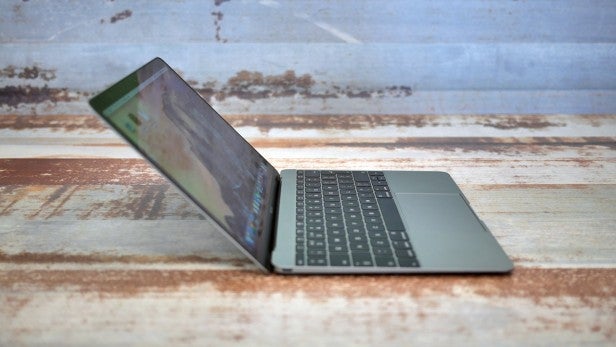
The Surface Pro is more powerful than the MacBook
Considering the Surface Pro 3 is a tablet, it might be surprising to hear that it packs a more powerful set of internals than the MacBook.
Powering the Surface Pro is one of Intel’s 4th generation Core chipsets, you can choose either the 1.5 GHz i3, 1.9 GHz i5 or beefy 1.7 Ghz i7 versions, with prices rising as you go. As the Surface Pro 3 is in the middle of its lifespan, these aren’t the latest ‘Broadwell’ processors, but the ‘Haswell’ models from last year.
Things are much simpler on the MacBook front, with just two configurations available and an extra boost available if required. Apple has decided to use Intel’s Core M CPU for the new MacBook, which ditches the need for a fan and allows the laptop to be much lighter and thinner.
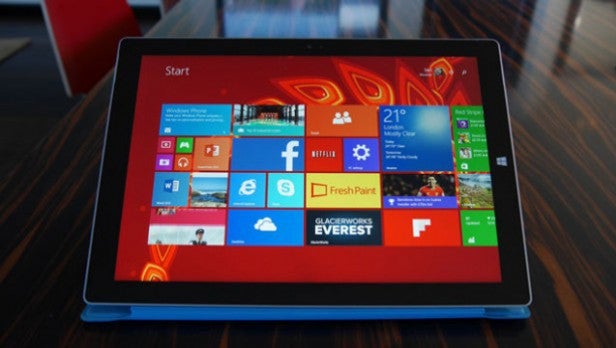
The base model comes with a 1.1GHz dual-core processor, while the slightly speedier version increases that to 1.2GHz. You will also be able to upgrade to a 1.3 GHz version. Paired with the CPU on the MacBook is 8GB RAM as standard and either a 256GB or 512GB SSD, depending on the which model you choose.
As you might have guessed, there’s a lot more choice when it comes to the Surface Pro 3. Starting at 4GB RAM with either a 64GB or 128 GB SSD, you can increase the RAM and storage significantly to 8GB and either 265GB or 512GB.
As it’s using fully-powered Intel processors, the Surface Pro 3 comes out on top in terms of performance. Well, to rephrase that, our review unit that we used for this comparison came out on top. We were using an i5 version with 8GB RAM which, when you include the keyboard, is about £100 cheaper than the MacBook.
That’s not to say performance on the MacBook is bad, because it really isn’t. It’s snappy in general use – browsing, typing, streaming HD video and even basic photo editing didn’t cause any problems. We wouldn’t advise trying to edit video though, that’s really where this machine falls down.
Neither machine has a dedicated graphics card, the MacBook uses the Intel HD Graphics 5300 while the Surface Pro 3 packs a different one for each of the available models. The Core i3 model has Intel an HD 4200 card, the HD 4400 sits in the i5 version and there’s the HD 5000 in the i7. So while simple gaming isn’t completely out of the question, you won’t be cranking up the graphics and performance with either of these.
The MacBook has a slight resolution advantage, but no multi-touch
While these two devices might be very different in a number of areas, screen size is not one of them as they both only have one option – 12-inches. On the Surface Pro 3 that display carries the ClearType Full HD Plus branding, which basically means it looks sharp, vivid and possesses impressive viewing angles along with the a resolution of 2160×1440.
SEE ALSO: Surface Pro 3 vs MacBook Air
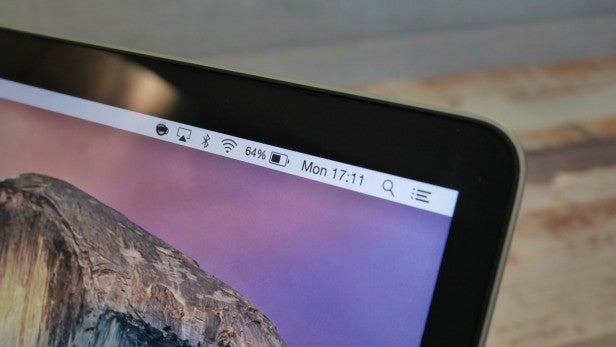
The MacBook Air always had to make do without a Retina display, but the new MacBook doesn’t. The 2304×1440 LED backlit IPS display matches up to other laptops in Apple’s line-up and it’s gorgeous. Sharp, rich and colourful with fantastic contrast that produces inky blacks.
But, there’s one thing that sets these two high-res displays apart, the one on the Surface Pro 3 is touch enabled, so you can scroll around with your finger. Microsoft also bundles a digital stylus with the device, which has some nifty palm blocking tech for accurate doodles.
Steve Jobs may have famously professed that ‘if you see a stylus, they blew it’ but we actually feel it’s a nice addition to the Surface line. It’s great for simple things like jotting down notes, but also for more in-depth tasks like Photoshop work.
Size differences
If you’re looking for a go everywhere device that is as comfortable plugged into the monitor on your desk as it is tucked into your messenger bag, both the MacBook and the Surface Pro 3 are great choices.
We’ve already mentioned this, but the MacBook is Apple’s thinnest and lightest laptop ever, taking the crown from the MacBook Air. This size shrinkage is not only down to the new Intel Core M processor, but also a new layered battery design that fits more cells in a smaller space.
The MacBook tips the scales at just 0.92kg, but the Surface Pro 3 is actually a bit lighter at just 0.8kg, though this is without the keyboard attached. Dimensions wise the Surface again comes in slightly larger, measuring in at 11.5 x 7.93 x 0.36-inches, compared to 11.04 x 7.74 x 0.52-inches for the MacBook.
Another important feature for any laptop, especially portable ones like these, is having a great keyboard to type on. The MacBook keeps a full-size keyboard, but Apple has created a new ‘Butterfly’ mechanism that decreases the amount of space needed for each key. You’ve also got an individual LED backlight under every button, giving a much more even light everywhere.
Apple’s keyboards have long been some of the best in the business. The chiclet style is a pleasure to type on and there’s normally plenty of traction in the keys to give it a satisfying ‘click’ as you tap down. With the changes this time around, there’s definitely not as much travel in the keys. That makes them a little flat to type on and it’s certainly something you will have to get used to. Once you’re up to speed though, it’s another impressive keyboard.
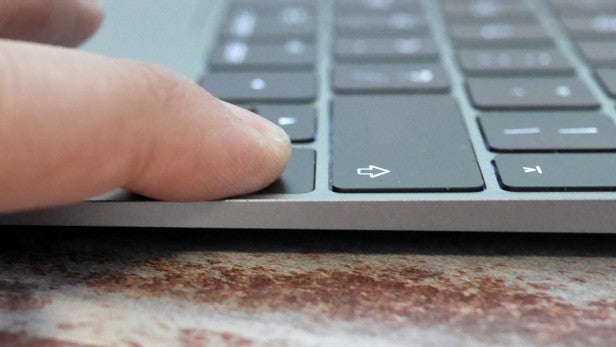
Moving on to the Surface 3 Pro and its keyboard is also sort of unique, in the sense that it detaches from the display and acts as a screen cover. It’s also not actually included with the Surface Pro 3, so you’ll need to spend £109.99 to get one.
The detachable aspect is great, but the keyboard itself is far from perfect. The keys are packed very tightly together, due to the sheer thinness of the thing, so mistakes and typos can often be commonplace. It is backlit though and comes in a range of nice colours.
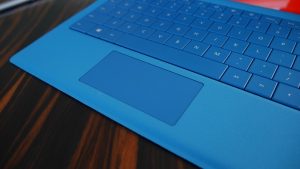
The keyboard also has a trackpad, which is fairly mundane when you compare it to the all singing, all dancing Force Touch, pressure sensitive trackpad on the MacBook that replaces an actual key press with a haptic vibration. There’s also the kickstand to take into consideration too. It’s the final piece of the Surface Pro 3 that really takes it out of tablet territory and into the laptop space. You have full control over the angle and unlike previous models it can actually be used on your lap.
Battery life is on par
These ultra-portable, chuck-it-in-your-bag type devices need killer battery life. We’d even like to be able to leave the bulky charging bricks at home and happily sit in a dark corner of Starbucks all day without worrying about hitting the red. That’s the dream, anyway.
In reality, both the Surface Pro 3 and Apple’s MacBook don’t miss the mark by much. While the Surface Pro has suffered from poor battery life in the past, the latest model manages about nine hours – as long as you’re not doing anything overly intensive. That’s enough to get you though most of the working day, but not much more beyond.
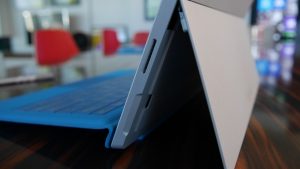
Apple’s MacBook, in our tests, fell just short of the Surface Pro 3 in terms of battery, but it was a closely fought thing. We managed to get eight hours of juice before we were forced to reach for the USB-C charging cable. Again, that will probably get you through the day, but it makes for a nervous final hour as you hit the red.
We were impressed with how efficient the MacBook was when streaming video though, as a hour lunchtime Netflix break only chewed through 9%.
Connectivity is more plentiful on the Surface Pro 3….But USB Type-C is a big deal
As the Surface Pro 3 is essentially a tablet that thinks it’s a laptop, it’s far from the most port heavy machine on the market. There’s a single USB 3.0 port, a Mini Display Port for video output and a MicroSD card reader, alongside the ubiquitous headphone jack, a port for connecting up that keyboard and a slot for the charger.
For a tablet it’s plentiful, not so much for a laptop.
SEE ALSO: What is USB-C?
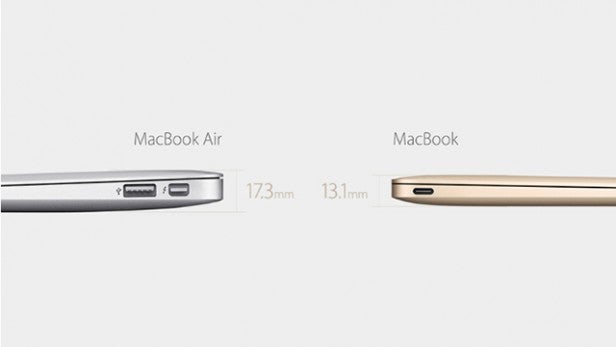
However, if you thought that was light, check out the MacBook’s port list. One USB Type-C connector and a headphone jack. That’s it.
While we’ve covered this new port in-depth in our MacBook vs MacBook Air comparison, the short version is that this USB connector (based on USB 3.1) can do everything those other ports can. So it’ll charge and power your laptop, pump out the display to a monitor and transfer data. It’s a reversible plug too, so you can jam the cable in either way and it’ll work.
We certainly agree that USB-C is the future – Android M works natively with the new connection – but having just one port on the MacBook just feels a bit restrictive.
You can’t charge the laptop and have it connected to an external monitor without a rather pricey dongle and if you’re on-the-go a lot and need to connect up a camera or charge your phone another accessory is needed.
Both machines boast plenty of wireless tech, including Bluetooth 4.0 and AC Wi-Fi.
SEE ALSO: Best OSX Yosemite Tips and Tricks
OSX vs Windows
The biggest difference between these two devices is the operating system they run. While the Surface Pro 3 runs Windows 8.1 Pro out of the box, the MacBook is powered by Apple’s latest iteration of OS X, Yosemite.
The Surface Pro 3 won’t be running 8.1 for long though, as Windows 10 is coming on July 29 (there’s a preview build available now) and that’s a pretty big overhaul, especially for hybrid devices like this. Cortana is now up and running – so you can have a chat with your laptop – and it brings back the Start menu, but makes it resizable and a place to store your Live Tiles.
SEE ALSO: What’s new in OSX EL Capitan?
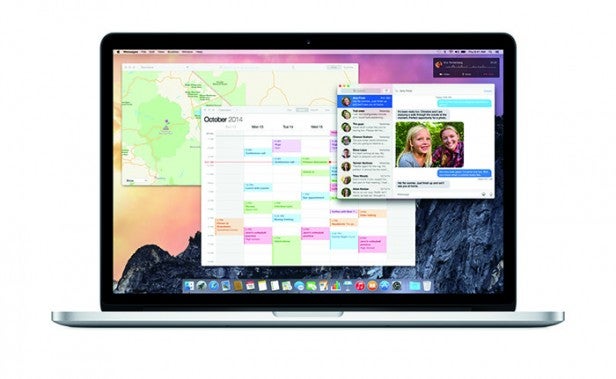
Similarly, Apple has announced the follow-up to Yosemite – El Capitan. We compare this to the jump between Leopard and Snow Leopard, so completely new features are missed out and replaced by lots of under the hood tinkering to make everything run faster. El Capitan is landing as a public beta in July and we should see a full release sometime in October.
OS X is still the more lightweight of the two, but Windows isn’t quite the butt of all jokes it was during the Windows Vista period.
Which should you buy?
The MacBook is an interesting addition to Apple’s laptop line-up. It’s got the looks and the sleek finish, but it’s pricey and it lacks the grunt to be considered a professional machine. You also need to take into consideration the port situation – are you happy with just one? Do you have mind having to buy a load of extras to use your kit?
It’s a different story with the Surface 3 Pro though. The screen is fantastic, it works just as well as being both a laptop and a tablet, the digital pen is great and it feels like a flagship product. We love it. The only issue is the lifespan, it’s already been out for a while and a new model could be just a few months out.
You can also pick up the base model of the Surface Pro 3 for just £659, though this rises a lot if you want more power and of course you’ve got the added cost of the keyboard to take into account too. The MacBook starts at £1,049 with 8GB RAM and a 256 SSD, for a comparable price you can get a Surface Pro with an Intel Core i7 CPU, 8GB RAM and a 256GB SSD.
Both devices are portable wonders, perfect for on-the-go work due to their light weight and slim builds. But, neither are built for gaming, or running intensive applications, so compromises need to be made.
Related : Microsoft Surface Pro 4 review


